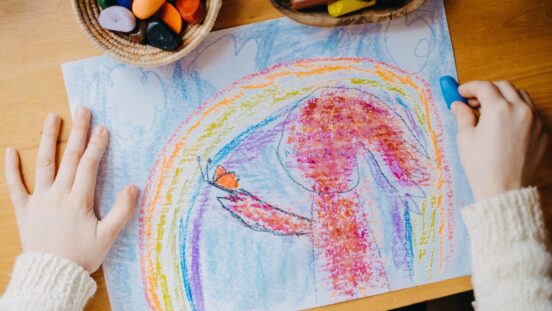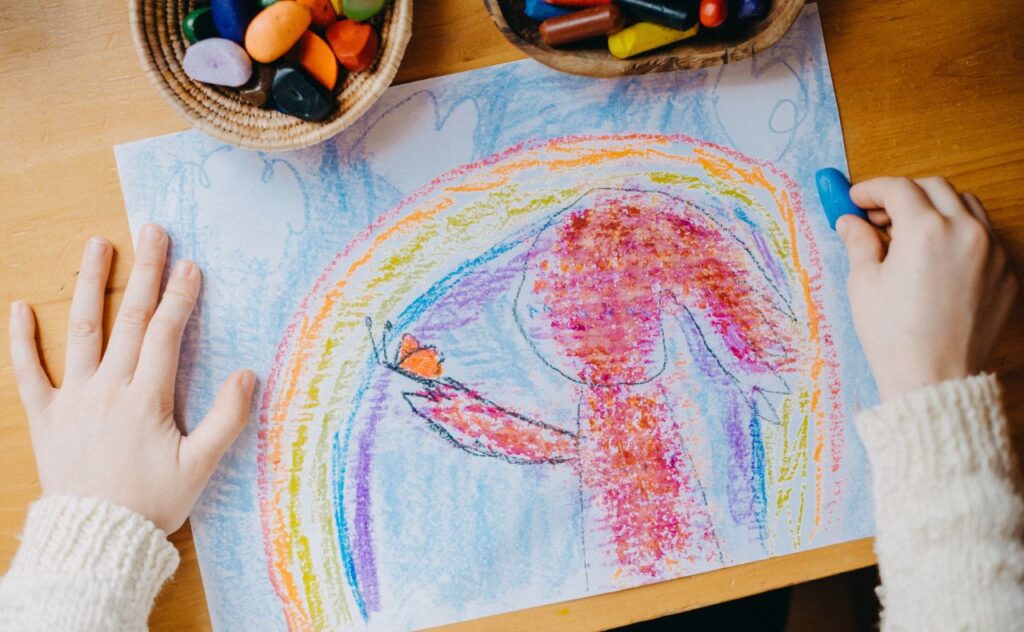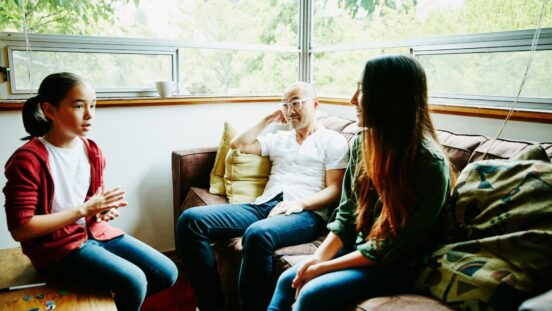3 ways to help children navigate grief

Grief is a part of life, but that doesn’t make it easy – especially for the smallest among us.
Grief is an inevitable part of life, and children are not exempt from its grasp. Whether it’s the loss of a family member, a friend or a beloved pet, children experience grief in various forms. As adults, it’s our responsibility to guide them through this challenging journey.
According to Feel the Magic, an Australian charity providing early intervention grief education programs for kids aged seven to 18, one in every 20 children will experience the death of a parent before the age of 18. To put that into perspective, that’s approximately one student in every classroom across Australia.
Supporting children through the grief process is essential for their emotional well-being and long-term development. Studies have shown that unresolved grief in childhood can have profound effects on mental health and relationships later in life.
How does grief affect children?
There’s no denying that grief at any age is upsetting. It can be a very overwhelming experience. It’s important to understand the way children experience and respond to these feelings can vary by age group.
Childhood grief by age
Toddlers & Preschoolers
Toddlers and preschoolers, for example, typically have a hard time understanding the permanence of death. They may continue to ask for the person who’s passed. Other common responses to grief by those in this younger age group can include:
- Changes in sleep or bathroom patterns
- Temporary separation anxiety
- Interest in new games or ways to play

Children 5+
Children older than five may struggle to accept the reality of death. This can be especially true when it touches someone close to them. It’s common for them to cycle through emotions like anger and sadness in the aftermath, with waves of grief stretching over an extended period. Other reactions commonly include:
- Aggressive play
- Nightmares
- Regression in maturity
Teenagers
Teens may feel out of control when they experience grief. This can be unnerving and overwhelming to them. Some may seek out reckless behaviours. Teens may also not be keen to talk about how they feel. Other responses may include:
- Increased irritability
- Sleep disruption
- Withdrawing from activities they used to enjoy
While every child experiences grief differently, providing them with age-appropriate tools and support systems can help them navigate the grieving process and build resilience in the face of loss.

How to help a grieving child
Grief Counsellor Karin Stenberg says that sharing stories and memories can be incredibly healing during times of grief. She says, “It allows children to honour the life of their loved one and find solace in the connections they shared.”
From age-appropriate books like The Memory Box, a Book about Grief to thoughtfully illustrated story cards and memory books that offer prompts, encouraging helpful conversation focused on how the person lived rather than how they died like Stories to Cherish, there are strategies and resources available to help children cope with grief in a healthy and constructive manner.
Here are three research-backed ways to help them navigate their journey through loss:
1. Encourage storytelling and art therapy
One effective way to help children navigate grief is through storytelling and art therapy. Encourage children to express their feelings and memories through drawing, painting or writing stories. These creative outlets provide children with a safe space to explore their emotions and process their grief in a non-verbal way. Additionally, storytelling can help children make sense of their experiences and find comfort in sharing their memories of their loved one. Whether it’s creating a scrapbook of cherished memories or writing letters to the person they’ve lost, storytelling and art can be powerful tools for healing.

2. Foster open communication and support
It’s essential to create an environment where children feel comfortable expressing their emotions and asking questions about their grief. Christine Harkin, Managing Director and Founder of Play Therapy in Melbourne, recommends fostering open communication using reflective listening rather than telling them everything will be okay or helping them try to be positive. This can look like saying, “You miss Grandma so much that you don’t know if you could ever be happy again.”
To further spark meaningful conversation, consider asking questions like:
- What do you miss most about them?
- What is your funniest memory of them?
- What was their favourite thing to do?
Once they open up, Harkin suggests providing reassurance and support. Let them know that whatever they may be feeling – sad, angry, confused, etc – is okay.

3. Create meaningful rituals and remembrance activities
Rituals and remembrance activities can help children honour the memory of their loved one and find comfort in their grief journey. Create meaningful rituals that allow children to express their emotions and remember their loved one in a positive way. This could include:
- Lighting candles on special occasions
- Planting a tree in their memory
- Creating a memory box filled with mementos and keepsakes
Engage children in these rituals and encourage them to participate in activities that celebrate the life of their loved one. By creating meaningful rituals and remembrance activities, children can find solace in their grief and feel connected to their loved one’s memory.
Building resilience in the face of loss
Supporting children through the grief process is essential for their emotional well-being and long-term development. To help children navigate the grieving process and build resilience in the face of loss, consider:
- Encouraging open communication
- Providing age-appropriate resources
- Fostering rituals and remembrance activities
Remember, it’s up to us as adults to provide a safe space for sharing memories and finding comfort in the stories they cherish.




